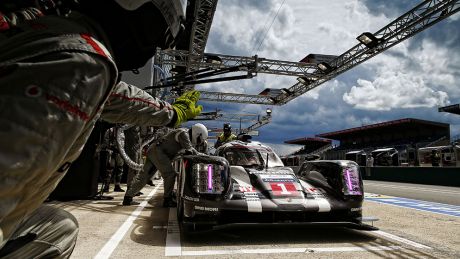How Drivers Endure the 24 Hours of Le Mans
To win the Le Mans 24-Hour, the toughest car race in the world, first you’ve got to stay awake…

James Hunt might have won the 1976 Formula One World Championship on a diet of champagne and cigarettes, but today’s racing drivers behave more like elite athletes than playboys. And with good reason: F1 drivers can expect to experience G-forces greater than a space shuttle on re-entry – it takes every muscle in their body just to remain stable in the cockpit.
But if you thought an F1 race was tough, just imagine the level of fitness required to compete at Le Mans, the legendary 24-hour endurance race famed for its grisly crashes and ferociously-powerful cars. Drivers cover more than 3,200 miles – the equivalent of a whole Grand Prix season – while battling exhaustion, lack of sleep and wandering back-markers. Here’s what they do to make it through the ordeal.
Cardio is king
“That’s the big difference with Le Mans: the length of time spent in the car,” says Eliot Challifour, manager of the Porsche Human Performance Centre, where Le Mans drivers such as Mark Webber and Jake Dennis get in shape. “Usually a motor race is an hour, but with Le Mans you’re looking at three or four stints lasting two to three hours each.” The biggest challenge is to sustain a higher heart rate for longer, so cardiovascular fitness is the key to any Le Mans fitness programme.
Cycling replicates driving
“Lots of drivers will do cross-country skiing, which is one of the toughest sports going,” says Challifour. “But cycling is perfect, too. If you’re doing a hilly endurance ride for three to four hours, averaging 20mph, you’ll be working in aerobic zones where you’re using oxygen, fats and some carbs as the fuel source. It’s a great way to increase aerobic efficiency.”
Lactate is the enemy
And “efficiency” is what it’s all about – not necessarily increasing a driver’s maximum performance. “With a 24-hour race you need to sustain that performance for longer periods, clearing out the waste products.” The enemy is lactate, which bogs down the muscles. “The quicker a driver can clear the lactate, the less of a detrimental effect it will have on their technical skills. We want them to be able to get on with the job they’ve trained their whole lives for.” During the stints in the car, Challifour encourages the drivers to do short warm-ups “to get them awake and alert, and get the muscles firing before they get in the car.” He tweaks their existing diet. “Quinoa and sweet potato are good sources of energy because you’re getting the carbs plus nutrients.”
Stick to a sleep cycle
Staying awake isn’t an issue for the quarter of a million spectators: there are trackside parties galore, Guinness tents, discos and a blaring funfair. But for the drivers, sleep deprivation can be a real issue. “You’ll see grown men getting extremely emotional because they’ve been through the mill,” says Webber. “We recommend a 20-minute power nap or a full 90-minute sleep cycle,” says Challifour. “You don’t want to be sleeping for 45 minutes or an hour because you’ll wake up mid-cycle, feeling groggy. And don’t make the classic mistake of spending time on an electronic device before bed; the light from the screen confuses the brain and slows down the production of melatonin.”
Navigating the tricky patch
Cognitively speaking, Le Mans is the equivalent of a day-long road rage incident. What with a heart rate pumped up to 160, the lack of sleep impairing the activity in the frontal lobe and the team strategising in your ear, staying sharp during what Webber calls the “tricky patch” between 4-8am is a challenge. “Technology such as the Saccadic Fixator – a circle of lights that tests hand-eye coordination – is one of the peripheral vision and dexterity training tools we use,” says Challifour. (It sounds like a scientific whack-a-mole.)
Get the Coach Newsletter
Sign up for workout ideas, training advice, reviews of the latest gear and more.
Gonna make you sweat
After each stint, drivers weigh themselves to check how much fluid they’ve lost. “We do a sweat test which looks at sodium content, which can genetically vary by eightfold. With that data, we look at how strong a driver’s electrolyte solution needs to be.”
“It’s draining, quite literally,” says Webber. “It’s the extreme experience as a racing driver and a really tough test of man and machine.”
